Aluminum vs Galvanized Steel Gutters
Aluminum Gutters
$840 - $1,400
(for 140 ft., installed)
VS
Galvanized Steel Gutters
$980 - $1,680
(for 140 ft., installed)
Cost to install aluminum or galvanized steel gutters varies greatly by region (and even by zip code).
To get free estimates from local contractors, please indicate yours.
Aluminum Gutters
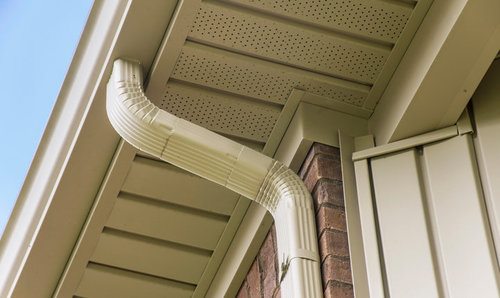
- Readily available
- Wide range of colors and styles
- Less expensive
- Lower maintenance
- Does not expand and contract with heat
- More resistant to rust
- Easier installation
- Can be painted
- Lasts roughly 20 years
- Cannot be used with algae resistant shingles or copper flashing
- May crack or split with rapid thermal change
- May leak around joints
- Easily dented
(for 140 ft., installed)
Get free advice and estimates from gutter contractors in your city.
Galvanized Steel Gutters
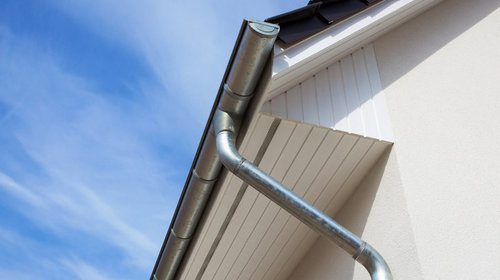
- Durable, hard to dent
- Does not crack in heat
- Can be installed with any shingles
- Available in seamless installation
- Less likely to leak
- Can be painted
- Lasts roughly 20 years
- Expands and contracts with heat
- Higher maintenance
- More expensive
- Smaller range of colors and styles
- Less resistant to rust
- More difficult and expensive to install
- Less availability
(for 140 ft., installed)
Get free advice and estimates from gutter contractors in your city.
Gutters are an integral part of your home’s exterior. Installed and used properly, they direct and channel water away from the roof and home’s edge, preventing leaks. Several materials are available today for gutters, with aluminum and galvanized steel 1 being the two most popular choices. There are many similarities between the two such that many people have trouble deciding. We will outline the differences below so that you can make a more informed decision for your home.
Popularity
Of the two materials, aluminum enjoys the most popularity. While steel was once considered the best and only material for gutters, the introduction of aluminum changed that. Many installers will now only work with aluminum, which makes it more difficult to buy and install steel gutters. Of the two, aluminum is available in a wider range of styles, sizes, and colors. You will have an easier time finding both the gutters themselves and an installer who will work with them.
Installation
Aluminum gutters are a lighter-weight material than steel. For this reason, many DIY homeowners choose to install aluminum over steel gutters, as do some installation professionals. Because of this weight difference, aluminum gutters will be faster to install, and therefore less costly. They may require fewer workers to lift and hang as well.
However, galvanized steel gutters can be cut to create a seamless gutter installation for your home. A seamless gutter can last longer than one with joints 2, which can be a benefit.
Location
Galvanized steel gutters can be installed nearly anywhere and with any roofing material. Aluminum gutters, however, cannot be installed on roofs that use algae-resistant shingles 3 or copper flashing 4. The copper particles, which help the roof resist algae growth, may cause corrosion of the aluminum when moisture is present. So, any copper particles washed into the gutter by rain can eventually break down and cause the aluminum gutter to fail.
Costs
Material costs for both are similar. Aluminum gutters cost between $4 and $8 a linear foot, while steel gutters cost between $4 and $9 a linear foot. Installation costs can vary depending on how many downspouts, hangers, bends, and mitered corners your home has. Installing seamless steel gutters will cost more as a sheet metal worker will be required to form the gutters before hanging them.
On average, it costs roughly $2 a linear foot for aluminum installation, and $3 a linear foot for steel gutter installation, due to the increased difficulty. For 140 feet of gutters, aluminum will cost around $840 to $1,400, while steel will cost around $980 to $16,80.
Weather
Aluminum does not do well in extreme thermal changes. When the weather heats up and cools down quickly, the material has a tendency to crack, which can lead to leaks. Galvanized steel handles rapid thermal changes well, without cracking or splitting.
Expansion and Contraction
While steel will not split in rapid thermal changes, it will expand and contract. This means that when the metal heats up, it expands or grows slightly larger. When it cools down again, it contracts or returns to its previous size. This expansion and contraction in no way harms the gutters but can stress the hangers and screws holding them in place. These may loosen over time and may require repair.
Rust
Both aluminum and steel gutters resist rust. However, aluminum resists it slightly better than galvanized steel. This is due in part to the fact that the steel is coated in a thin layer of zinc to prevent rusting. This zinc is easily scratched off, and the scratches are difficult to see. If not repaired, the scratches can lead to rust over time, which can damage the integrity of the gutters.
Maintenance and Durability
Both aluminum and steel gutters will have some degree of maintenance and should last at least 20 years before needing major repairs or replacement.
Aluminum gutters resist rust better and last longer than steel. However, they still need to be repainted about every 10 years. Aluminum also dents more easily if hit by tree limbs or hail or if a ladder is leaned against it. These dents do not necessarily impede the function of the gutter but may detract from its appearance.
Steel gutters should be inspected regularly for missing zinc and rust. To help them last longer, they should be repainted or sealed every few years. Steel gutters tend to get chalky over time, which may mean that you need to paint them more frequently.
Paint
Both types of material can be painted. Steel gutters may require more frequent painting as they tend to get chalky over time. On average, you should paint aluminum gutters every 10 years and steel gutters every three or four years.
Leaks
Aluminum gutters are more likely to leak over time. This can happen for a few reasons. Aluminum has a higher tendency to split or crack, which can cause leaks. The joints are also a common cause of leaks as these areas may scratch and rust more easily, allowing water to seep through. Galvanized steel can be created as a seamless gutter, which helps eliminate this problem.
Remodeling Terms Cheat Sheet
Definitions in laymen's terms, cost considerations, pictures and things you need to know.See full cheat sheet.
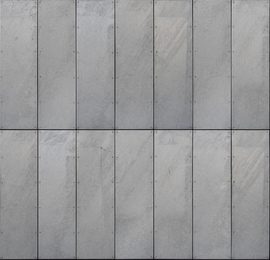 1 Galvanized steel: Steel that has had a protective zinc coating applied to it to make it resistant to rusting
1 Galvanized steel: Steel that has had a protective zinc coating applied to it to make it resistant to rusting
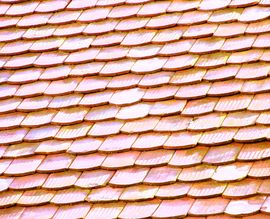 3 Shingles: A smooth, uniform, flat piece of construction material, available in a wide variety of materials and laid in a series of overlapping rows, used to cover the outside of roofs or walls to protect against weather damage and leaks.
3 Shingles: A smooth, uniform, flat piece of construction material, available in a wide variety of materials and laid in a series of overlapping rows, used to cover the outside of roofs or walls to protect against weather damage and leaks.
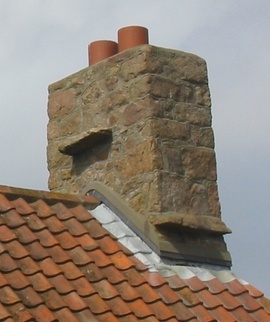 4 Flashing: Pieces of sheet metal used on roofs to cover joints, such as where the roof meets the wall, or around a chimney or skylight, to protect them and prevent water leaking through
4 Flashing: Pieces of sheet metal used on roofs to cover joints, such as where the roof meets the wall, or around a chimney or skylight, to protect them and prevent water leaking through
How much does it cost to install aluminum or galvanized steel gutters in my city?
Cost to install aluminum or galvanized steel gutters varies greatly by region (and even by zip code).
To get free estimates from local contractors, please indicate yours.